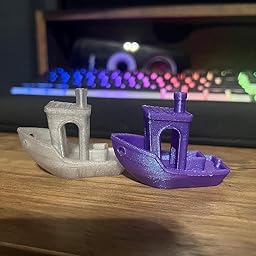PLA vs PETG: A Deep Dive into Mold Making Materials

Mold making is an intricate process that demands the selection of the right materials to ensure success. Among the array of options available, Polylactic Acid (PLA) and Polyethylene Terephthalate Glycol (PETG) stand out as popular choices. In this in-depth exploration, we’ll uncover the properties, applications, and considerations surrounding PLA vs PETG, empowering mold makers to make informed decisions for their projects.
Introduction to PLA and PETG
PLA, derived from renewable resources, is lauded for its eco-friendliness and versatility, while PETG offers strength, durability, and transparency.
Properties and Characteristics
- PLA: Boasting a low melting temperature, PLA yields smooth surface finishes and intricate details. Its biodegradable nature appeals to environmentally conscious projects. However, it may not fare as well in high-temperature environments.
- PETG: With a higher melting temperature, PETG excels in strength, durability, and chemical resistance. Its transparency and impact resistance make it ideal for a wide range of applications. Yet, PETG may not align with sustainability goals as much as PLA.
Applications and Use Cases
- PLA: Commonly used in prototyping, concept modeling, and low-temperature applications, PLA is suitable for creating temporary or disposable molds. Its biodegradable nature makes it a preferred choice for eco-conscious projects.
- PETG: PETG finds its niche in applications requiring durability, strength, and heat resistance. It’s often utilized in producing functional prototypes, production tools, and molds for injection molding.
Key Considerations in Material Selection
When deciding between PLA and PETG for mold making, consider:
- Project Requirements: Evaluate temperature resistance, durability, and surface finish needed for the project.
- Printing Compatibility: Ensure compatibility with 3D printing processes and equipment to avoid complications.
- Cost-effectiveness: Analyze material costs and production efficiency to determine the most economical option.
- Environmental Impact: Evaluate the environmental implications, including biodegradability and recyclability, to align with sustainability goals.
Material Selection
When choosing between PLA and PETG for mold making, consider: PETG is widely used in various industries, including food packaging, medical devices, and consumer products. Its exceptional properties make it an attractive choice for mold manufacturing, especially for applications requiring toughness and durability.
- Project Requirements: Evaluate the specific needs of your project, including temperature resistance, durability, and surface finish.
- Printing Compatibility: Ensure compatibility with your 3D printing process and equipment to avoid issues during production.
- Cost-effectiveness: Compare material costs, waste generation, and production efficiency to determine the most cost-effective option for your project.
- Environmental Impact: Consider the environmental implications of each material, including biodegradability and recyclability.
PLA and PETG
Polylactic Acid (PLA) is a biodegradable thermoplastic polymer derived from renewable resources such as corn starch or sugarcane. It is known for its environmentally friendly properties, PLA vs PETG: A Deep Dive into Mold Making Materials ease of use, and low toxicity. PLA is commonly used in 3D printing and mold manufacturing due to its biocompatibility and ability to produce intricate designs with high accuracy.
Polyethylene Terephthalate Glycol (PETG) is a durable and versatile thermoplastic polymer known for its excellent strength, impact resistance, and transparency. PETG is widely used in various industries, including food packaging, medical devices, and consumer products. Its exceptional properties make it an attractive choice for mold manufacturing, especially for applications requiring toughness and durability. PETG is widely used in various industries, including food packaging, medical devices, and consumer products. Its exceptional properties make it an attractive choice for mold manufacturing, especially for applications requiring toughness and durability.
Conclusion
In conclusion, both PLA and PETG offer unique advantages and considerations for mold making. By understanding their properties, applications, and key considerations, mold makers can make informed decisions to achieve optimal results in their projects. Whether prioritizing eco-friendliness, durability, or versatility, there’s a material suited to meet the needs of every mold making endeavor.
